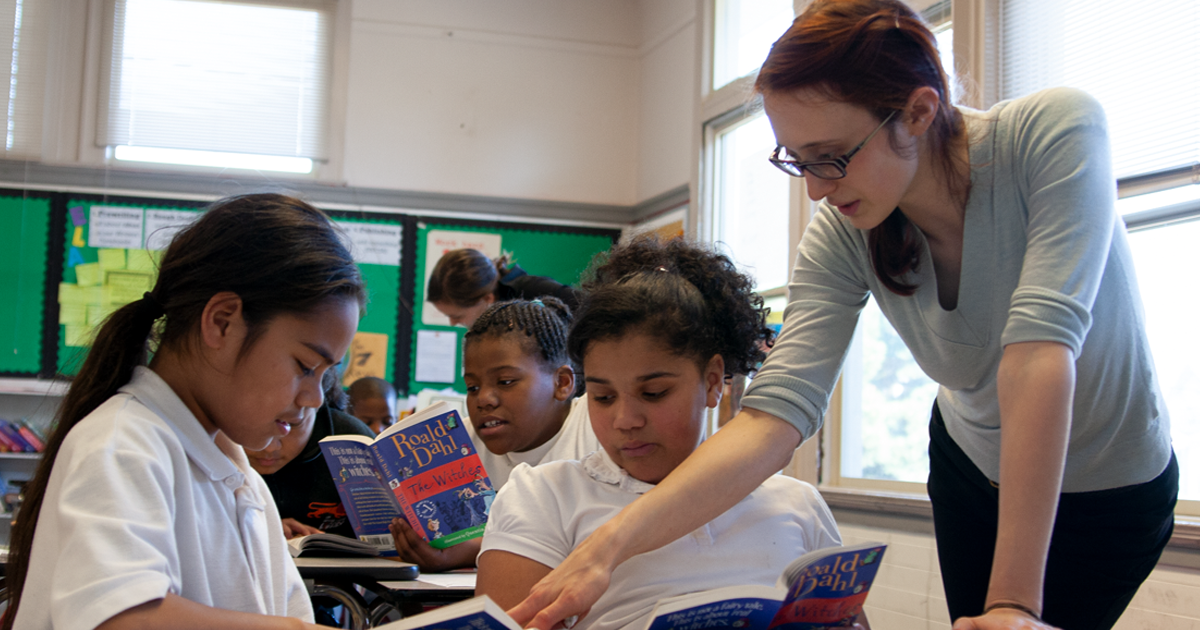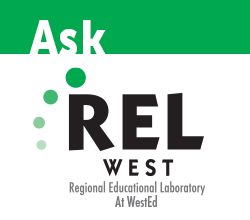Recovering from the Pandemic: What Can We Learn from Research on Disruptions to K–12 Education?
Posted on by Kim Austin

This article first appeared on the REL West blog and is posted here with permission.
The impact of the pandemic on student learning is at the front of people’s minds — from parents to educators, administrators, and policy leaders. The effect of school closures and interruptions in instruction can vary based on a number of factors — access to virtual learning, the quality and amount of remote instruction, support at home, and the degree of student engagement.
 Recently, REL West received an Ask A REL request for research on learning loss from a regional intermediary organization in the Inland Empire Region of California whose aim is to increase postsecondary credential attainment, add more qualified people to the workforce, and contribute to a thriving economy. The organization’s CEO shared our response memo with district superintendents in the region. The question posed in the memo was, “Could you provide research on K–12 learning loss during COVID-19?”
Recently, REL West received an Ask A REL request for research on learning loss from a regional intermediary organization in the Inland Empire Region of California whose aim is to increase postsecondary credential attainment, add more qualified people to the workforce, and contribute to a thriving economy. The organization’s CEO shared our response memo with district superintendents in the region. The question posed in the memo was, “Could you provide research on K–12 learning loss during COVID-19?”
At the time the memo was produced, there was not much research on the actual learning loss from the past year. But there were studies that projected the need for accelerated learning once learning occurred in-person and full-time, as well as lessons learned from other types of pauses or disruptions to K–12 education (e.g., summer recess; Hurricane Katrina). In this blog, we share selected recommendations for dealing with K–12 learning loss from three research references in the memo.
Provide learning materials, especially in mathematics, to students and families
Taking into account research on summer learning loss, Kuhfeld and Tarasawa (2020) project that as a result of recent school closures and an array of contributing stresses and trauma caused by the coronavirus pandemic, student academic achievement will decline in greater proportions than the average trajectory from summer learning loss. They also conclude that when some students return to in-person instruction, they will be particularly behind in mathematics. Among several recommendations, Kuhfeld and Tarasawa suggest providing resources and support to families and students, especially around mathematics, where the steepest declines often occur over summers and with interrupted school time.
Provide intensive academic and social supports
A brief by Allensworth and Schwartz (2020) is one in a series aimed at providing K-12 education decision makers and advocates with an evidence base to ground discussions about how to best serve students during and following the pandemic. The researchers consider potential interventions for students who have fallen out of typical grade range — particularly for those who were struggling before the pandemic. According to the researchers, learning losses are likely to show up differently across grades and subjects, while already struggling students and elementary students will need intensive academic support.
To accelerate learning in both math and reading for students who are furthest behind grade-level work, Allensworth and Schwartz recommend high-dosage tutoring (around two hours daily) that is directly tied to classroom content. Extended learning time interventions, such as “acceleration academies” (providing struggling students with targeted, small-group instruction in a single subject over week-long vacation breaks staffed with highly effective teachers) and double-dose math classes (enrolling students in a full-year algebra course and a simultaneous algebra support class, for example) show strong evidence of effectiveness.
Allensworth and Schwartz also stress the importance of providing supportive school environments that ensure every student has at least one strong relationship with a supportive adult to speed recovery from learning loss. Additionally, strong systems to monitor early warning signs paired with norms and routines focused on students’ social and emotional learning can help students recover emotionally and rebuild their academic engagement. Such monitoring systems can track attendance, assignment completion, and grades, as well as strengthen schools’ ability to individualize services and match specific interventions to the needs of different students.
Plan for multiple years of individualized attention
In response to the nation’s closure of schools in March 2020, The Center on Reinventing Education’s Dr. Paul Hill interviewed school and academic leaders in New Orleans to learn about their observations and lessons learned when education was disrupted by Hurricane Katrina (Hill, 2020). According to the study, students returned to school more than two years below grade level on average, with losses in mathematics being the most dramatic; schools had to continuously assess and adjust to students’ learning loss as students trickled back to New Orleans’ schools over time; and it often took multiple years of individualized attention to make up for the greatest learning losses. Unexpectedly, New Orleans’ education leaders reported that at elementary schools where skill recovery was emphasized, students scored poorly on state accountability tests. However, a consequent re-emphasis on grade-level instruction resulted in improved test scores. The leaders also noted that in high schools, the use of “spiraling” (whereby teachers presented regular course materials after re-teaching prerequisite materials that some students had missed) greatly improved students’ persistence in school and graduation.
The effects of the pandemic are far reaching and are exacerbating long-standing opportunity gaps. Research can provide evidence-based information to help educators, administrators, and policymakers plan for and address some potential impacts of extended interruptions in classroom instruction when schools reopen.
Additional Resources
- Ask-a-REL memo: Research on learning loss during COVID-19 (REL West)
- Project: Ed Research for Recovery (Annenberg Institute at Brown University and Results for America)
- Research compilation: Toolkit to overcome learning loss (Hanover Research)
- Blog post: Introducing Operation Reverse the Loss (Institute of Education Sciences)
- Research paper: Learning during COVID-19: Initial findings on students’ reading and math achievement and growth (NWEA)
- Handbook: ED COVID-19 Handbook, Volume 2: Roadmap to Reopening Safely and Meeting All Students’ Needs (U.S. Department of Education)
References
Allensworth, E., & Schwartz, N. (2020). School practices to address student learning loss. EdResearch for Recovery Project.
Hill, P. (2020). What post-Katrina New Orleans can teach schools about addressing COVID learning losses. Center for Reinventing Public Education.
Kuhfeld, M., Tarasawa, B., Johnson, A., Ruzek, E., & Lewis, K. (2020). Learning during COVID-19: Initial findings on students’ reading and math achievement and growth. NWEA Research.
